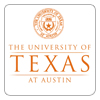Computing has become an integral part of everyday practice within modern fields of science, technology, engineering, and math (STEM). As a result, the STEM+Computing Partnerships (STEM+C) program seeks to advance new approaches to, and evidence-based understanding of, the integration of computing in STEM teaching and learning. Computational Thinking (CT) is an intellectual skill rooted in the ability to conceive of meaningful, information-based representations that can be effectively manipulated by a computer. Integrating CT into core science instruction addresses practical constraints in K-12 education, in that there is no room in the curriculum to teach it directly to everyone. But, more importantly, integrating CT into core science provides a synergistic opportunity to deepen instruction in both. STEM education programs that effectively foster development of CT skills as an essential competency are among the most successful in preparing a future STEM workforce that can leverage computational methods to advance basic science and engineering research and design innovative approaches for using data-rich resources to solve complex, societally-relevant problems. Similarly, a science-literate society increasingly needs to appreciate how advances in scientific knowledge are inter-woven with the use of big data, modeling, and simulations, if they are to make informed, evidence-based decisions. This project will explore the integration of core chemistry topics and computational thinking through student interaction with and manipulation of models that visually represent chemical systems, such as the carbon cycle. When a student examines a visual, runnable model, makes a prediction, changes the programming code, and then runs the model again, the computer provides feedback to the student that demands explanation. The process of anticipating, interpreting, and testing the computer's feedback, when coupled with a structured argumentation process, supports a student's abilities to think and act like a scientist as they explore and learn about both the computational and physical world.
Virginia Tech and the University of Texas at Austin will investigate a method of broadening access to CT thinking by providing it in a context that all students take: 8th Grade Integrated Science. Targeted chemistry topics will be embedded into editable, runnable computational models that are themselves embedded within a pedagogy of structured scientific argumentation focused on the production of evidence-based reasoning. Students will learn about chemical systems, as well as key concepts such as equilibrium and reaction rates, through interacting with models as they are represented visually and about CT through modifying and adapting the code to better represent aspects of the chemical systems. Four computational chemistry tasks, including computer models and associated standards-aligned curricula, will be developed and refined using participatory, design-based research techniques, in partnership with four Austin, TX teachers serving ~300 students from a variety of socio-economic settings. A curricular framework called Argument Driven Computational Thinking and two associated assessment tools - the Performance Assessment of Computational Thinking and the Computing Attitudes Test - will be developed and validated. Quantitative and qualitative analysis of videotaped classroom instructional activities, student artifacts, and computer-use logs will be used to document the effectiveness and broad utility of this new model for integrating chemistry and computing. A post-doctoral fellow and two graduate students will be trained through this project.







